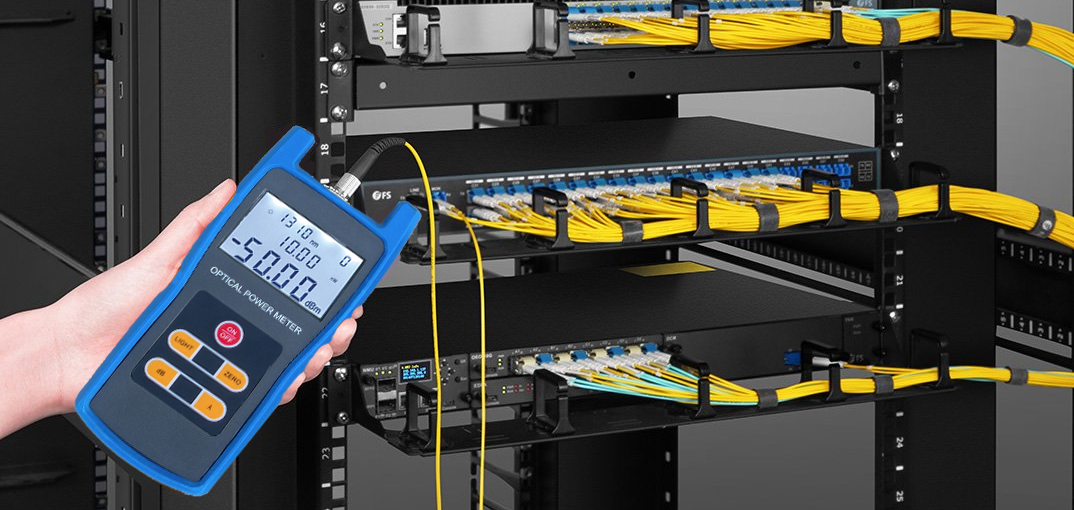Engineers work with the optical fibre diameter analyser to ensure fibre uniformity.
Engineers work with the optical fibre diameter analyser to ensure fibre uniformity.
Blog Article
Discovering the Advantages of Optical Fiber Examining for Boosted Interaction Systems
The importance of optical fibre testing in contemporary interaction systems can not be overstated, as it works as a foundation for ensuring network integrity and efficiency. Making use of advanced methods such as Optical Time-Domain Reflectometry (OTDR) and insertion loss analysis, organizations can not only determine mistakes yet also enhance their setups. This aggressive screening strategy has extensive implications for signal quality and functional effectiveness, raising the concern of exactly how these practices add to lasting sustainability in an ever-evolving technical landscape. Understanding these dynamics is necessary for stakeholders intending to maintain a competitive edge.
Relevance of Optical Fibre Testing
The significance of optical fiber testing can not be overemphasized in today's data-driven environment. As organizations progressively depend on high-speed information transmission for day-to-day procedures, the honesty and performance of optical fibre networks are critical. Testing guarantees that these networks can sustain the vast quantities of data created and transmitted perfectly, promoting reliable communication and connectivity.
Optical fibre testing offers several vital features, consisting of verifying installation high quality, recognizing possible faults, and establishing general system efficiency. Routine testing can avoid pricey downtimes and service disruptions, allowing companies to keep operational continuity. Additionally, it aids in compliance with sector standards and policies, making sure that fiber optic setups fulfill called for requirements for safety and dependability.
Furthermore, screening can enhance the durability of fibre optic systems. By proactively determining issues such as signal loss, depletion, or adapter failures, companies can attend to issues before they rise, hence expanding the life of their framework. In summary, optical fibre screening is not just a technical need yet a critical investment that improves network dependability, optimizes performance, and eventually supports the growth and effectiveness of contemporary communication systems.
Trick Checking Approaches

OTDR is a crucial technique utilized to identify mistakes, step splice losses, and evaluate the general honesty of a fibre optic link. By sending a pulse of light down the fiber and evaluating the reflected light, technicians can determine places of mistakes and evaluate the network's performance over fars away.
Insertion loss testing determines the amount of signal loss that happens when light travel through a link or splice. This technique is vital for verifying that links satisfy specified loss limits, which is necessary for maintaining ideal efficiency in interaction systems.
Optical return loss screening evaluates the amount of light reflected back in the direction of the source due to imperfections in the fibre or links. High return loss worths indicate better performance and decreased signal degradation.
With each other, these screening approaches give a detailed analysis of fiber optic networks, guaranteeing their reliability and performance in varied interaction applications.
Effect On System Performance
Effective optical fibre screening straight influences the overall efficiency of interaction systems. By making certain the stability of fibre optic cable televisions, testing determines potential mistakes such as depletion, splice loss, and adapter imbalance. These problems can dramatically degrade signal high quality, causing disruptions and lowered information transmission speeds.

In addition, regular optical fibre testing contributes to long-term system sustainability. It allows very early detection of deterioration, permitting prompt upkeep and upgrades prior to major anonymous failures occur. This not just lengthens the life-span of the facilities yet additionally guarantees that communication systems remain affordable in terms of performance.
Cost-Effectiveness and Performance
Cost-effectiveness is a crucial factor to consider in the deployment and upkeep of optical fibre networks. Implementing durable optical fibre screening procedures can significantly lower functional costs by recognizing concerns before they intensify right into major troubles. robotic vision. By discovering faults, depletion, and other efficiency obstacles early, companies can avoid expensive repair work and downtime, which can interrupt services and bring about revenue loss
In addition, reliable testing techniques improve the installation process, permitting professionals to function much more properly. This translates to lower work expenses and faster job conclusion times. Advanced testing tools, such as Optical Time Domain Name Reflectometers (OTDRs), enables an accurate assessment of fibre high quality, making sure that just ideal materials are utilized, thus reducing waste.
Normal screening likewise adds to far better resource allowance. By recognizing the network's performance, organizations can make informed decisions regarding upgrades and growths, ensuring that financial investments are made where they are most required. In recap, optical fibre screening enhances cost-effectiveness and effectiveness, supporting the long-lasting sustainability and competition of interaction systems in a progressively demanding market.
Making Sure Long-Term Reliability
Carrying out strenuous optical fiber screening not only enhances price financial savings and functional performance but likewise plays a pivotal function in making certain the lasting i loved this reliability of communication networks. Consistent screening practices, including attenuation and transmission capacity evaluations, help determine potential destruction in fiber performance before it causes service disturbances.
By utilizing advanced screening approaches, network drivers can pinpoint faults or weaknesses in the fibre facilities, enabling for prompt remediation. This proactive technique decreases downtime, making sure that interaction systems remain practical and efficient. In addition, regular screening adds to the growth of an extra resilient network, as operators can adapt and maximize their framework based upon real-time data insights. robotic vision.
In addition, ensuring conformity with market standards via optical fiber screening strengthens the high quality and integrity of the whole interaction system. This adherence not just bolsters self-confidence among stakeholders but also linked here aligns with regulative demands, which are increasingly stringent.
Conclusion
Finally, optical fibre testing functions as a basic component in improving interaction systems. By employing different testing approaches, such as OTDR and insertion loss assessments, networks can attain optimal efficiency and dependability. The positive identification of mistakes not only boosts signal top quality however also minimizes downtime, eventually adding to cost-effectiveness and operational efficiency. Adherence to market standards cultivates stakeholder confidence, ensuring the lasting sustainability of communication infrastructures in a progressively data-driven landscape.
Report this page